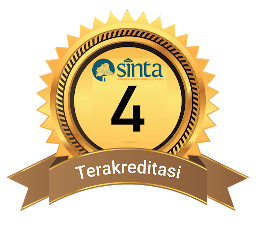Development of a contextual-based chemistry e-module on electrolyte and non-electrolyte solutions for high school students
DOI:
10.29303/cep.v6i1.3608Published:
2023-05-31Issue:
Vol. 6 No. 1 (2023): Edisi Mei 2023Keywords:
Development, E-Module, Contextual, Electrolyte, Non-Electrolyte SolutionsArticles
Downloads
How to Cite
Abstract
This study aims to produce a chemistry e-module on electrolyte and non-electrolyte solutions for high school students. This study uses a research and development model grouped into three parts: preliminary studies, initial product development, and evaluation. The total population of the study was 144 students of SMA NW Suralaga, with 40 grade 11 students as the sample. Data collection techniques using a questionnaire then analyzed descriptive statistics. The results showed that (1) the results of the chemical e-module validation analysis were included in the very valid category (0.825). (2) the results of the analysis of student responses to the chemistry e-module fall into the very practical category (84%).
References
Alam, A. (2022). Mapping a sustainable future through conceptualization of transformative learning framework, education for sustainable development, critical reflection, and responsible citizenship: an exploration of pedagogies for twenty-first century learning. ECS Transactions, 107(1), 9827.
Handayani, D., Elvinawati, I., & Alperi, M. (2021). Development Of Guided Discovery Based Electronic Module For Chemical Lessons In Redox Reaction Materials. International Journal of Interactive Mobile Technologies, 15(7).
Lubis, I. R., & Ikhsan, J. (2015). Pengembangan media pembelajaran kimia berbasis android untuk meningkatkan motivasi belajar dan prestasi kognitif peserta didik SMA. Jurnal Inovasi Pendidikan IPA, 1(2), 191-201.
Muganga, L., & Ssenkusu, P. (2019). Teacher-centered vs. student-centered: An examination of student teachers’ perceptions about pedagogical practices at Uganda’s Makerere University. Cultural and Pedagogical Inquiry, 11(2), 16-40.
Nechypurenko, P. P., Stoliarenko, V. G., Starova, T. V., Selivanova, T. V., Markova, O. M., Modlo, Y. O., & Shmeltser, E. O. (2020). Development and implementation of educational resources in chemistry with elements of augmented reality.
Prayitno, S. H., & Jaedun, M. P. D. (2018). Authentic assessment competence of building construction teachers in Indonesian vocational schools. Journal of Technical Education and Training, 10(1).
Solehah, Enong Eha. 2015. Pengaruh E-Modul Berbasis Contextual Teachiig And Learning (CTL) Terhadap Hasil Belajar Siswa Pada Konsep Fluida Statis. Skripsi. Fakultas Ilmu Tarbiyah Dan Keguruan Universitas Islam Negeri Syarif Hidayatullah: Jakarta
Sugiyono. 2018. Metode Penelitian Kuantitatif. Bandung : Alfabeta.
Susanti, N., Yennita, Y., & Azhar, A. (2020). Development of contextual based electronic global warming modules using flipbook applications as physics learning media in high schools. Journal of Educational Sciences, 4(3), 541.
Wahyuni, S. (2016). Curriculum development in Indonesian context the historical perspectives and the implementation. Universum: Jurnal KeIslaman dan Kebudayaan, 10(01), 73-82.
Author Biographies
Hasna Hasna, Universitas mataram
Dwi Laksmiwati, Pendidikan Kimia, FKIP, Universitas Mataram
Saprizal Hadisaputra, Pendidikan Kimia, FKIP, Universitas Mataram
Muti’ah Muti’ah, Pendidikan Kimia, FKIP, Universitas Mataram
License
Copyright (c) 2023 Hasna Hasna, Dwi Laksmiwati, Saprizal Hadisaputra, Muti’ah Muti’ah

This work is licensed under a Creative Commons Attribution-ShareAlike 4.0 International License.
Authors who publish with Chemistry Education Practice agree to the following terms:
- Authors retain copyright and grant the journal right of first publication with the work simultaneously licensed under a Creative Commons Attribution License 4.0 International License (CC-BY-SA License). This license allows authors to use all articles, data sets, graphics, and appendices in data mining applications, search engines, web sites, blogs, and other platforms by providing an appropriate reference. The journal allows the author(s) to hold the copyright without restrictions and will retain publishing rights without restrictions.
- Authors are able to enter into separate, additional contractual arrangements for the non-exclusive distribution of the journal's published version of the work (e.g., post it to an institutional repository or publish it in a book), with an acknowledgement of its initial publication in Chemistry Education Practice.
- Authors are permitted and encouraged to post their work online (e.g., in institutional repositories or on their website) prior to and during the submission process, as it can lead to productive exchanges, as well as earlier and greater citation of published work (See The Effect of Open Access).






